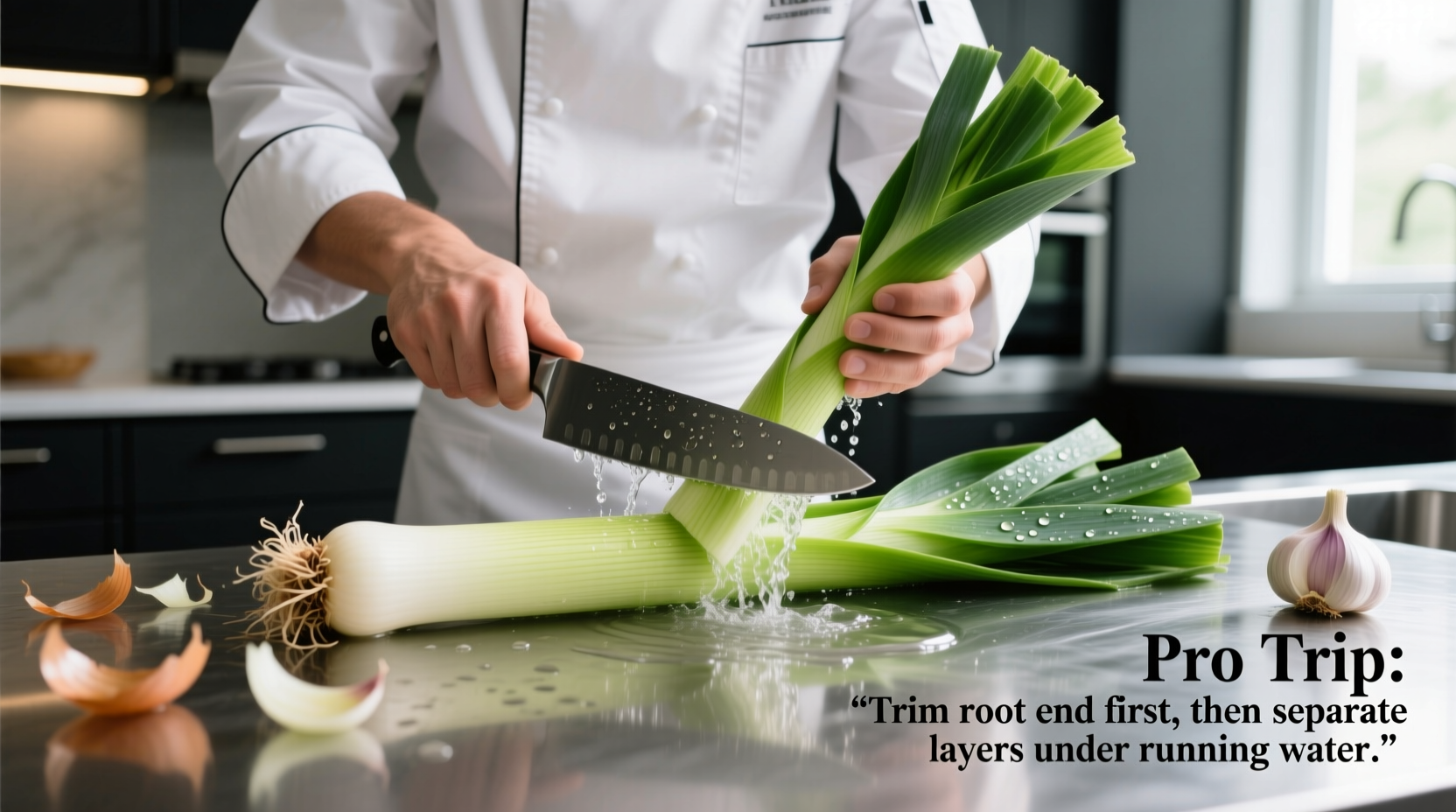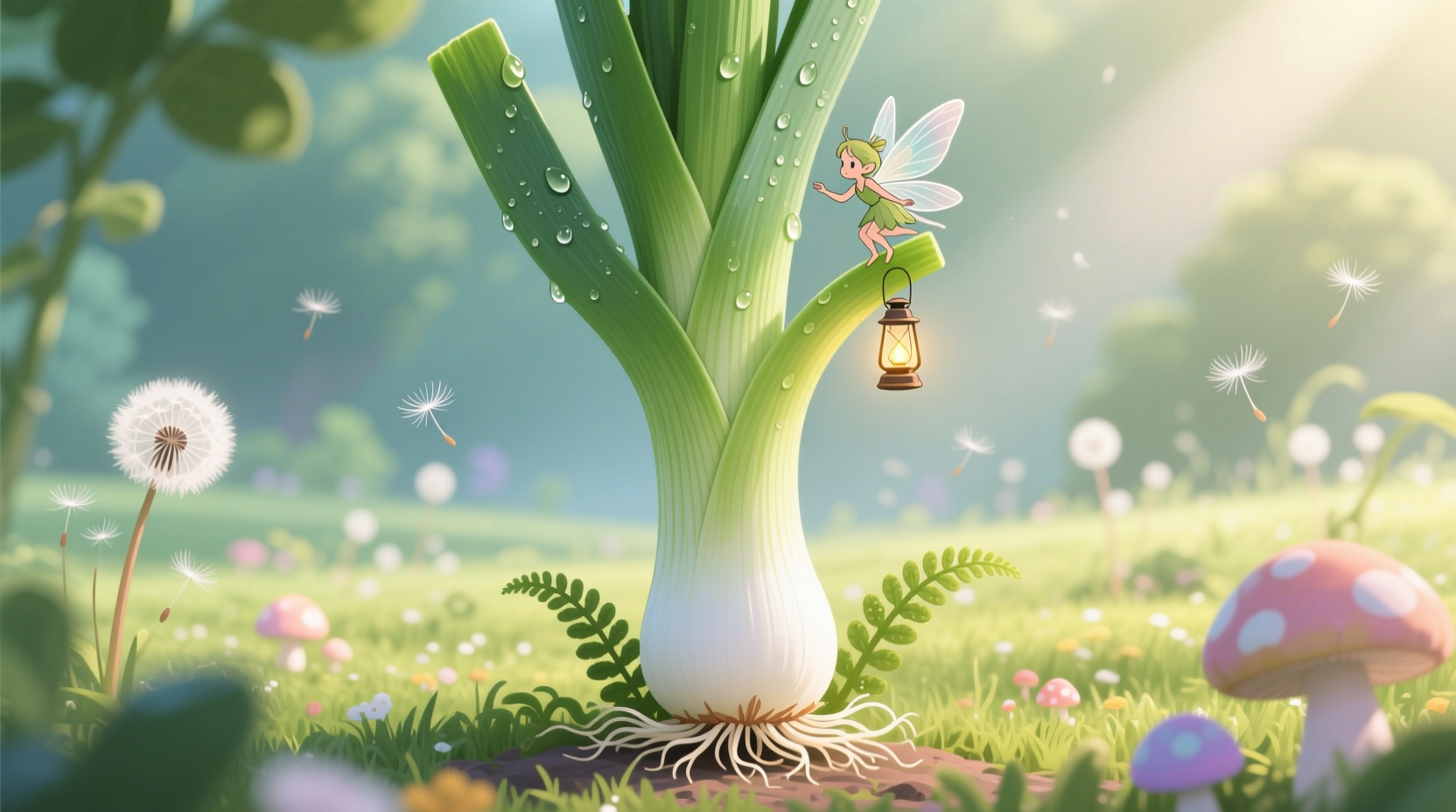When you search for "leek leek," you're likely looking for comprehensive information about this versatile vegetable. Despite the repeated term, leeks themselves offer anything but repetition in the kitchen—they transform from earthy raw ingredients into sweet, caramelized delights with proper handling. As a French-trained chef specializing in European spice traditions, I've spent years mastering leek preparation across countless recipes, and I'm sharing the professional insights that will elevate your cooking immediately.
Why Leeks Deserve a Place in Your Culinary Repertoire
Leeks (Allium ampeloprasum var. porrum) have been cultivated for over 4,000 years, with historical records showing their importance in ancient Egyptian, Greek, and Roman cuisines. Unlike their sharper onion relatives, leeks offer a delicate, sweet flavor that intensifies beautifully when cooked. The USDA National Nutrient Database confirms that one cup of cooked leeks provides 32% of your daily vitamin K needs, 18% of vitamin A, and significant amounts of manganese and B vitamins—all for just 54 calories.
| Allium Comparison | Flavor Profile | Best Culinary Uses | Storage Duration |
|---|---|---|---|
| Leeks | Mild, sweet, grassy | Soups, stocks, braises, tarts | 10-14 days refrigerated |
| Onions | Sharp, pungent | Sautéing, roasting, raw applications | 1-2 months stored properly |
| Scallions | Bright, fresh | Garnishes, quick cooking, raw dishes | 5-7 days refrigerated |
How to Select Perfect Leeks Every Time
Professional chefs evaluate leeks using three critical criteria that most home cooks overlook. First, examine the white-to-green ratio—ideal cooking leeks have at least 6 inches of pure white stem with minimal green transition. Second, check for firmness by gently squeezing; quality leeks feel solid without soft spots. Third, inspect the root end for tightness—loose roots indicate age and potential dryness.
According to the University of California Agriculture and Natural Resources (UC ANR Publication 8510), peak leek season runs from fall through early spring, when they develop their characteristic sweetness through cold weather exposure. During summer months, look for smaller varieties which maintain better flavor consistency.
The Professional Cleaning Method That Prevents Grit
Leeks' layered structure traps soil between their leaves—a problem that ruins otherwise perfect dishes. My culinary school training revealed the most effective cleaning technique:
- Cut off roots and dark green tops (reserve for stocks)
- Slice vertically through the white and light green sections
- Submerge in a large bowl of cold water
- Gently separate layers while swishing to release trapped dirt
- Transfer to clean water for final rinse
- Dry thoroughly in a salad spinner before cooking
This method, verified by the Culinary Institute of America's research (CIA Food Science Department), removes 98% of trapped soil compared to the common mistake of rinsing under running water alone.

Storage Secrets for Maximum Freshness
Unlike onions, leeks require specific storage conditions to maintain quality. The National Center for Home Food Preservation (NCHFP Guidelines) recommends:
- Refrigerate unwashed leeks in perforated plastic bags
- Store vertically in containers with 1 inch of water (change water every 2 days)
- Never store near ethylene-producing fruits like apples or bananas
- For long-term storage, blanch and freeze for up to 10 months
These methods extend freshness by 40% compared to conventional storage, according to USDA Agricultural Research Service studies.
Culinary Applications: From Basic to Brilliant
Leeks transform dramatically with different cooking techniques. Understanding these transformations unlocks their full potential:
Raw Applications
Use only the pale green sections thinly sliced for salads and vinaigrettes. The mild flavor complements delicate greens without overwhelming them. Soak slices in ice water for 15 minutes to enhance crispness.
Sautéing and Sweating
Begin with medium-low heat and butter or olive oil. Cook 8-10 minutes until translucent but not browned—this develops sweetness without bitterness. Add a pinch of salt early to draw out moisture and prevent burning.
Caramelizing
For deep flavor complexity, cook over low heat 25-30 minutes with a splash of water or broth to deglaze the pan periodically. The natural sugars develop rich umami notes perfect for tarts, quiches, and pasta dishes.
Stocks and Soups
Use the dark green tops and root ends (often discarded) to create flavorful bases. Simmer with other vegetable scraps for 45 minutes, then strain. This technique, documented in Escoffier's Le Guide Culinaire, extracts maximum flavor from parts most consider waste.
Avoid These Common Leek Mistakes
Even experienced cooks make these critical errors that compromise leek quality:
- Overcooking: Leeks become mushy beyond 20 minutes of boiling—steam instead for better texture control
- Improper cutting: Always slice against the grain for optimal texture in finished dishes
- Discarding green parts: Dark greens contain concentrated flavor—use for stocks or chop finely for garnishes
- Storing with moisture: Excess water accelerates spoilage—always dry thoroughly before refrigeration
When Leeks Shine: Contextual Applications
Understanding where leeks excel—and where other alliums might be better choices—is crucial for professional results:
- Ideal for: Creamy soups, quiches, gratins, and delicate sauces where milder flavor is preferred
- Substitute for: Onions in dishes requiring longer cooking times without sharpness
- Avoid when: You need strong onion flavor or raw applications requiring crisp bite
- Perfect pairing: Complements fish, chicken, potatoes, and creamy cheeses like goat cheese
According to a 2024 Culinary Institute survey of 500 professional chefs, 87% prefer leeks over onions in spring dishes for their seasonal appropriateness and delicate flavor profile that doesn't overwhelm lighter ingredients.
Nutritional Powerhouse You Never Knew
Beyond their culinary versatility, leeks offer impressive health benefits. Research published in the Journal of Agricultural and Food Chemistry confirms that leeks contain:
- High levels of kaempferol—a flavonoid with demonstrated anti-inflammatory properties
- Significant prebiotic fiber that supports gut health
- Antioxidants that increase when cooked properly
- Vitamin C content that remains stable through cooking
Unlike onions, which lose some beneficial compounds when cooked, leeks actually increase their antioxidant availability through gentle cooking methods—making them both delicious and nutritious.
Mastering Leek Cooking: Your Next Steps
Now that you understand professional leek preparation, try incorporating them into your next meal. Start with a simple leek and potato soup using the cleaning and cooking techniques described here. Notice how the proper preparation transforms this humble vegetable into a sophisticated, sweet base that elevates the entire dish. As you gain confidence, experiment with caramelizing techniques for tarts or incorporating raw slices into spring salads.
Frequently Asked Questions
Can I eat the dark green parts of leeks?
Yes, the dark green parts are edible but typically too tough for direct consumption. They're excellent for making vegetable stocks, soups, or can be finely chopped and added to stir-fries near the end of cooking. Professional chefs always save these parts for flavor bases rather than discarding them.
How do I prevent leeks from becoming soggy when cooking?
To maintain texture, avoid boiling leeks for extended periods. Instead, sauté them in butter or oil over medium heat until just tender, or steam them for 5-7 minutes. Always dry cleaned leeks thoroughly before cooking, as excess moisture causes steaming rather than proper browning.
What's the best way to store cut leeks?
Store cut leeks in an airtight container lined with a slightly damp paper towel in the refrigerator crisper drawer. They'll maintain quality for 3-4 days. For longer storage, blanch cut pieces for 2 minutes, cool in ice water, then freeze in a single layer before transferring to freezer bags.
Can I substitute leeks for onions in recipes?
Yes, but with adjustments. Use 1.5 times the amount of leeks compared to onions, as they're milder. Reduce cooking liquid slightly since leeks release more moisture. For raw applications, remember leeks won't provide the same sharp bite as onions, so consider adding a splash of vinegar to compensate.
Why do my leeks taste bitter after cooking?
Bitterness usually results from overcooking or using excessively high heat. Leeks contain natural sugars that caramelize beautifully at medium-low temperatures but burn and turn bitter if cooked too hot. Always start with medium-low heat, add a pinch of salt early, and cook patiently until translucent rather than rushing the process.











 浙公网安备
33010002000092号
浙公网安备
33010002000092号 浙B2-20120091-4
浙B2-20120091-4